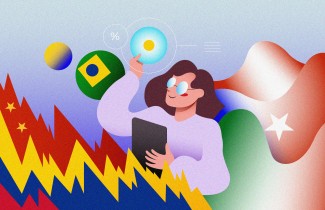Same Person, Different Customer
Traditional segmentation has not taken into account ‘situational demand’, a concept that can help companies drive the development of more and better business strategies
For quite a while, I have been wondering about the suitability of customer segmentation and the way in which we tend to narrow consumers down into smaller groups in order to define them with a more specific profile and, in this way, propose a differentiated market strategy with greater precision.
Segmentations are usually demographic, psychographic, geographic or behavioral, and, in some cases, transactional: business to business, business to consumer, consumer to consumer, or consumer to business (also known as B2B, B2C, C2C and C2B, respectively). In other cases, segmentation can be carried out by lifestyles or consumption patterns. The fact is that right now it is difficult to imagine that these groups could exist in a static context, as if they were in a single photograph, or even that someone could be labelled.
Although there are strategic advantages to segmenting, there are also enormous challenges in how it is carried out and, even more so, in generating strategies. Therefore, I would like to put forward a new concept that I have called ‘situational demand’, which underscores the importance of context and environment in segmentation.
Let’s imagine a consumer who has a profile with certain predetermined conditions, such as age, income, education and geographic area, among others. This consumer buys a coffee every Monday morning at the same coffee shop and needs it quickly, perhaps even using the drive-thru service, since he is on his way to work. Now let’s imagine that this same consumer, on the same day after lunch, goes back to this coffee shop, but has more time now, seeking a brief moment to relax, deal with some of the day’s tasks on his mobile device or even meet up with somebody. Now, a third scenario could be when the same person goes to the same place, but this time at the weekend and with the time and inclination to socialize.
We could mention innumerable other scenarios involving the same person and the same business. Importantly, in each and every case, the person is the same, but he is not the same type of customer, since his needs, satisfiers, preferences, payment availability, etc. are different. This means that the same person may or may not be the same type of customer.
Significant reflections can be drawn from this example. First of all, we must acknowledge that there is a dimension that involves the consumer and his or her context. Regarding the definition of strategies as a business model, identifying the types of environments that exist or can be created to provide a background and structure for the consumption situations as an endogenous factor is relevant. Under this same premise, we need to identify the exogenous factors and know which ones, in both cases, will impact the nature of the transaction or experience offered. We could also delve into the person’s different behaviors when he or she is alone, accompanied (by whom?), at work, or in recreational settings, etc.
This is where concepts such as consumer demand analysis by means of prices, income and other variables acquire different levels of relevance, for example, in terms of elasticities –even issues such as price discrimination, if they had a place in the strategy— or affective forecasts regarding the circumstances.
Diverse approaches can be used to analyze something as complex as consumer decisions (and what derives from them), but nowadays we also have data analytics and artificial intelligence. By generating large volumes of data we can determine, on the one hand, a person’s different facets and, on the other, generate algorithms that allow us to crosscheck different contexts and buying situations with the behavior of the same person in different circumstances. This enables us to cultivate the concept of ‘situational demand’, where an individual becomes different types of consumers.
We are, without doubt, in terms of business strategy, continuing to develop enormous opportunities and analysis capabilities, within an environment of evolving competition that invites us to do so, not only with greater dynamism, but also greater efficacy. Ultimately, knowing that the same person may not be the same type of customer provides us with an opportunity to drive the development of more and better business strategies.
Originally published in Expansión.



